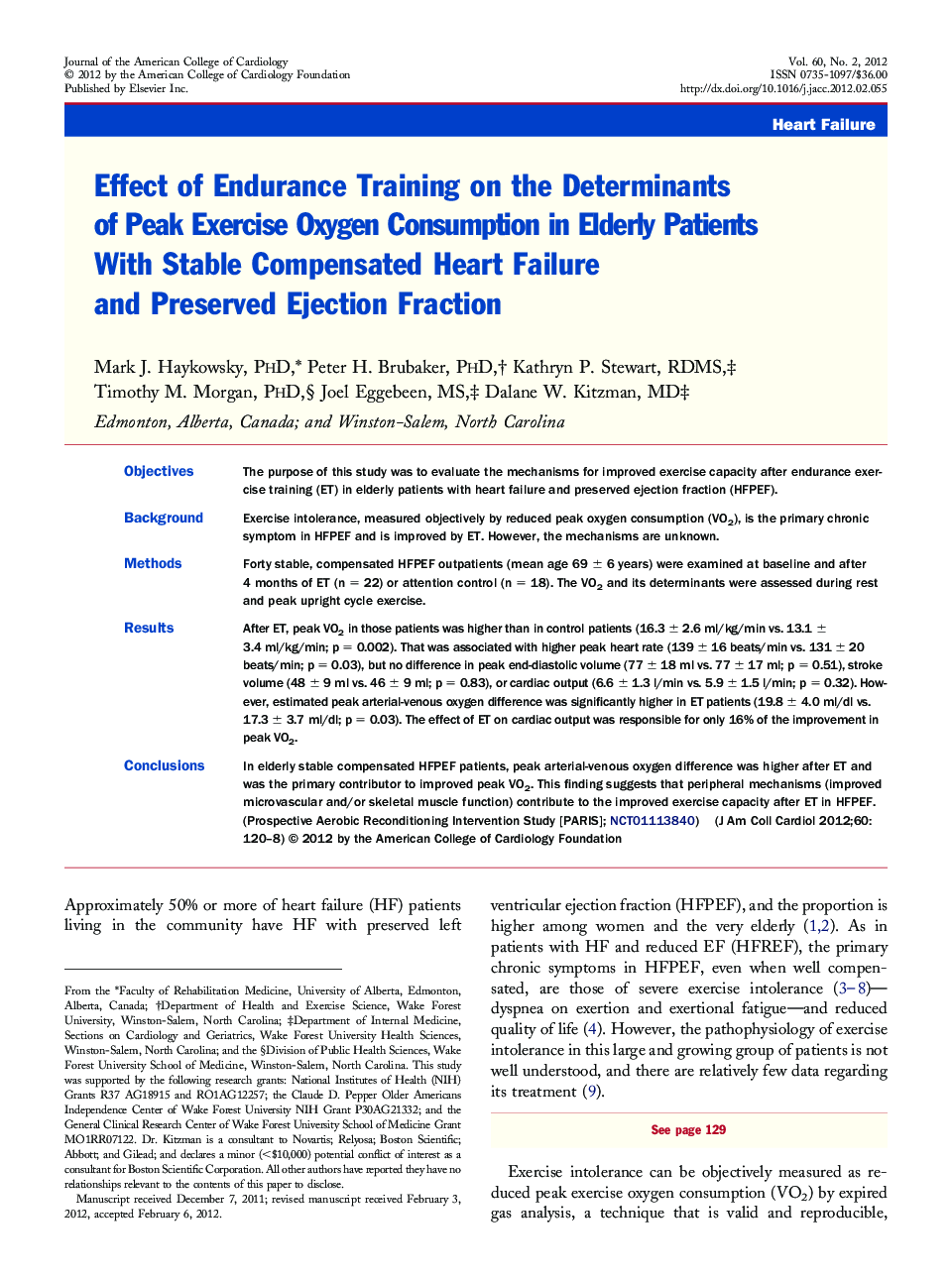| کد مقاله | کد نشریه | سال انتشار | مقاله انگلیسی | نسخه تمام متن |
|---|---|---|---|---|
| 2947130 | 1577204 | 2012 | 9 صفحه PDF | دانلود رایگان |

ObjectivesThe purpose of this study was to evaluate the mechanisms for improved exercise capacity after endurance exercise training (ET) in elderly patients with heart failure and preserved ejection fraction (HFPEF).BackgroundExercise intolerance, measured objectively by reduced peak oxygen consumption (VO2), is the primary chronic symptom in HFPEF and is improved by ET. However, the mechanisms are unknown.MethodsForty stable, compensated HFPEF outpatients (mean age 69 ± 6 years) were examined at baseline and after 4 months of ET (n = 22) or attention control (n = 18). The VO2 and its determinants were assessed during rest and peak upright cycle exercise.ResultsAfter ET, peak VO2 in those patients was higher than in control patients (16.3 ± 2.6 ml/kg/min vs. 13.1 ± 3.4 ml/kg/min; p = 0.002). That was associated with higher peak heart rate (139 ± 16 beats/min vs. 131 ± 20 beats/min; p = 0.03), but no difference in peak end-diastolic volume (77 ± 18 ml vs. 77 ± 17 ml; p = 0.51), stroke volume (48 ± 9 ml vs. 46 ± 9 ml; p = 0.83), or cardiac output (6.6 ± 1.3 l/min vs. 5.9 ± 1.5 l/min; p = 0.32). However, estimated peak arterial-venous oxygen difference was significantly higher in ET patients (19.8 ± 4.0 ml/dl vs. 17.3 ± 3.7 ml/dl; p = 0.03). The effect of ET on cardiac output was responsible for only 16% of the improvement in peak VO2.ConclusionsIn elderly stable compensated HFPEF patients, peak arterial-venous oxygen difference was higher after ET and was the primary contributor to improved peak VO2. This finding suggests that peripheral mechanisms (improved microvascular and/or skeletal muscle function) contribute to the improved exercise capacity after ET in HFPEF. (Prospective Aerobic Reconditioning Intervention Study [PARIS]; NCT01113840)
Journal: Journal of the American College of Cardiology - Volume 60, Issue 2, 10 July 2012, Pages 120–128